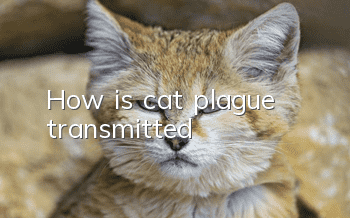Regarding cat neutering, what cat owners must know!

What is sterilization/castration surgery
Let me first give you a simple definition of sterilization: sterilization is the surgical removal of a pet’s reproductive organs by a veterinarian. Neutering male dogs and cats is technically called castration, which involves surgical removal of the testicles. For female dogs and cats, sterilization involves complete removal of the uterus and ovaries.
Why do pets need to be neutered?
The first major benefit of sterilization surgery: Controlling the number of stray animals. Many unplanned pregnancies occur and when owners are unable to place these pets, they can easily become stray animals.
The second major benefit of sterilization surgery: Reduces the aggressiveness of animals. Neutering can reduce animal aggression. However, it is not recommended to neuter purely for the purpose of changing an animal's behavior, as surgery is not an alternative to training an animal's behavior.
The third major benefit of sterilization surgery: Prevent animals from getting lost, especially male animals. For female animals, there is no need to worry about bleeding everywhere during menstruation.
The fourth major benefit of sterilization surgery: The most important point is health issues. Sterilization can effectively reduce or avoid the probability of contracting some diseases.
The following common diseases are caused by non-sterilization:
Pyometra: According to statistics, the probability of suffering from pyometra is as high as 25% in dogs and cats that have not been neutered. Female animals over three years old are more likely to suffer from pyometra.
Mammary gland tumors: It is the most common disease in elderly dogs and cats. Canine breast tumors account for 42% of the total canine tumors. And the malignancy rate is as high as 50%, and at least 80% of cat breast tumors are malignant. There is a 51% chance that unneutered dogs will develop one of the above diseases, and both diseases require surgical treatment, but compared with neutering, the risks and costs are doubled.
Prostate problems: For uncastrated male dogs, signs of hyperplasia will 100% be found as they age, and most of them are benign hyperplasia with no clinical symptoms. However, as the prostate enlarges, it will compress the rectum, causing difficulty in defecation and tenesmus. Prostate cancer may even occur.
Things you must know before neutering your dog or cat
[1] Neutering is more appropriate for animals over 6 months old.
[2] Sterilization during estrus should be avoidedSurgery, because the fragility of the uterus increases during the estrus period, and the blood vessels increase and become thicker. Therefore, sterilization surgery at this time increases the risk of surgery.
[3] It is best to make an appointment the day before the operation to avoid waiting too much time due to too many people and pets after entering the pet hospital, and causing unnecessary stress to your pet.
[4] Before surgery, it is generally forbidden to fast for 6-8 hours and water for 2 hours. This is to prevent vomiting during the operation, excessive abdominal pressure, and unnecessary difficulty in the operation.
【5】It is best to prepare a box or cage with sufficient space. Generally, even if the pet is fully awake after the operation, it cannot walk on the ground in person. Sufficient space ensures that the pet has enough resting place.
【6】After entering the pet hospital, under normal circumstances, the doctor will recommend some examinations for your pet. It is very necessary to do a routine blood examination to measure the overall health of your pet from the white blood cells, red blood cells, and lymphocytes of the blood. A full set of biochemical examinations is also necessary to assess the animal's physical condition before anesthesia and reduce surgical risks.
2. Anesthesia methods for sterilization surgery
Choice of anesthetic:
Most hospitals have eliminated domestic anesthetics due to unsatisfactory safety and unsatisfactory anesthesia effects. At present, imported anesthetics for intramuscular injection and respiratory anesthesia are mainly used.
Imported anesthetics are generally used for intramuscular injection, and are currently used more in sterilization surgeries in economically underdeveloped areas.
Respiratory anesthesia is safe and effective, and can monitor the physical condition of animals in real time. However, the disadvantages are that the equipment is expensive, there are many anesthesia steps, it requires full monitoring by an anesthesiologist, and it requires high veterinary skills. As for the final choice of anesthesia method, it should be based on your pet’s specific health condition and the doctor’s advice.
Post-operative care details
【1】No food or water should be allowed for 6-8 hours after surgery. In the absence of complete awakening, the trachea and other parts are in a state of paralysis, and liquids should be avoided from choking into the trachea and causing life-threatening consequences. After fully waking up, you can give liquid food, such as nutritional ointments and canned food.
【2】Keep warm. Your body temperature will be slightly lower for a period of time after surgery.
【3】If your pet is in abnormal pain, you can also ask the doctor to inject analgesic injections.
[4] Limit your pet’s strenuous exercise for one week after surgery to avoid wound dehiscence caused by strenuous exercise. Also try to avoid going out.
【5】Sutures are usually removed 7-10 days after surgery.
【6】Keep the wound as dry as possible and disinfect the wound every day. For general use only for petsPostoperative anti-inflammatories.
【7】 Your pet will wear an Elizabethan ring after surgery until the stitches are removed. This is a very important point in care. During the wound healing process, your pet will have the habit of licking its own wounds, causing the sutures to break and the wound to become infected.
- Which one is better, hair removal cream or cat grass? A must-read for pet owners!
- Why do cats keep losing weight?
- Is erythromycin ointment poisonous if licked by cats?
- How to care for a cat’s mouth?
- Why does a cat arch its back?
- What is the best age to neuter an American wirehaired cat?
- Why does a cat cry from one eye?
- Every time the poop scooper scoops poop for the cat, what is the cat thinking?
- What is catnip? How to use on cats?
- What causes a cat’s nose to become hot?



